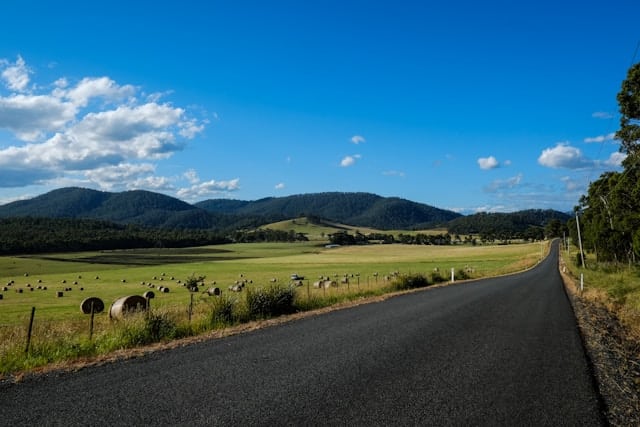Australia is known for its diverse climate, ranging from tropical rainforests and arid deserts to temperate coastal cities. The country’s vast size means weather conditions vary significantly from region to region, making it important to understand local patterns—whether you’re planning a move, daily routine, or holiday.
This guide offers an overview of Australia’s weather across seasons and regions, with practical advice on how to prepare for temperature changes, weather alerts, and dressing appropriately in 2025. Being informed about your local climate supports comfort, safety, and smart planning year-round.
Seasonal Overview: Summer, Autumn, Winter, and Spring
Australia’s seasons are opposite to those in the Northern Hemisphere. The four main seasons are:
-
Summer (December to February): Hot and often humid, especially in northern and central regions. Coastal cities like Sydney and Perth experience highs in the mid-30s°C.
-
Autumn (March to May): Generally mild and dry, with cooler evenings. A popular season for travel and outdoor activities.
-
Winter (June to August): Temperatures drop, particularly in the south. Snow falls in alpine areas, while northern regions remain warm and dry.
-
Spring (September to November): Warming temperatures and longer daylight hours. Rainfall increases in some regions, with blooming landscapes and fluctuating weather.
Understanding how the seasons work is essential when scheduling travel, adjusting wardrobes, and preparing for changes in outdoor conditions.
Climate Zones Across Australia
Australia includes several distinct climate zones, each with its own weather characteristics:
-
Tropical (e.g., Darwin, Cairns): Hot year-round with wet and dry seasons. The wet season (Nov–Apr) brings heavy rainfall and potential cyclones.
-
Arid and Semi-Arid (e.g., Alice Springs, Broken Hill): Hot summers and cooler winters with very low rainfall. These inland regions experience large temperature swings between day and night.
-
Temperate (e.g., Melbourne, Sydney, Adelaide): Four distinct seasons, with warm summers and cool winters. Rain is spread throughout the year.
-
Mediterranean (e.g., Perth): Hot, dry summers and mild, wet winters.
-
Alpine (e.g., Snowy Mountains): Cold winters with snowfall, making these areas suitable for winter sports.
These regional differences affect how people live, work, and dress. For guidance on climate-specific clothing, see: How to Dress for Different Australia Climates
Preparing for Weather Extremes
In recent years, Australia has experienced more frequent weather extremes, including bushfires, floods, and heatwaves. Being prepared for these events can help reduce risk and ensure safety.
The Bureau of Meteorology (BOM) provides regular updates on forecasts, warnings, and severe weather alerts. Residents should familiarise themselves with local emergency services, evacuation routes, and preparedness plans. Some practical steps include:
-
Checking daily weather forecasts before travelling or commuting
-
Avoiding outdoor activity during extreme heat or heavy rainfall
-
Ensuring homes are fire-safe in high-risk bushfire areas
-
Keeping an emergency kit with essentials such as water, first aid supplies, and important documents
-
Signing up for SMS weather alerts in cyclone- or flood-prone regions
Understanding Australia’s weather risks supports personal safety and community resilience.
Practical Weather Tips for Daily Life
Australia’s weather plays a major role in day-to-day decisions, from what to wear to how to travel. Whether you’re a local resident or a recent arrival, here are some key tips to stay prepared throughout the year:
-
Wear sun protection year-round, including SPF 30+ sunscreen, hats, and sunglasses
-
Keep an umbrella or raincoat handy during autumn and spring
-
Use layers in temperate zones where temperatures can shift quickly
-
Stay hydrated during hot summer months and limit outdoor activity during peak heat
-
Plan holidays and road trips based on seasonal conditions and regional weather trends
-
Invest in both warm and breathable clothing depending on your location
-
Keep windows shaded in summer to manage indoor heat
-
Use BOM weather apps or websites for local updates
-
Be weather-aware when planning hikes, camping trips, or beach outings
For more cultural and lifestyle insights connected to climate, visit the Remitly Lifestyle and Culture Blog.
FAQ: Weather in Australia
1. What is the hottest month in Australia?
January is typically the hottest month, especially in central and northern Australia where temperatures can exceed 40°C.
2. Does it snow in Australia?
Yes. Snow falls in alpine regions such as the Snowy Mountains in NSW and Victoria during winter (June–August).
3. What is the wet season in northern Australia?
The wet season lasts from November to April, bringing heavy rain, thunderstorms, and potential cyclones to tropical areas.
4. Are bushfires common in summer?
Yes. Summer is bushfire season in many parts of Australia, especially in dry and forested areas. Stay alert to fire warnings.
5. How can I prepare for a heatwave?
Stay indoors during peak heat, drink plenty of water, use fans or air conditioning, and check in on vulnerable individuals such as the elderly.

